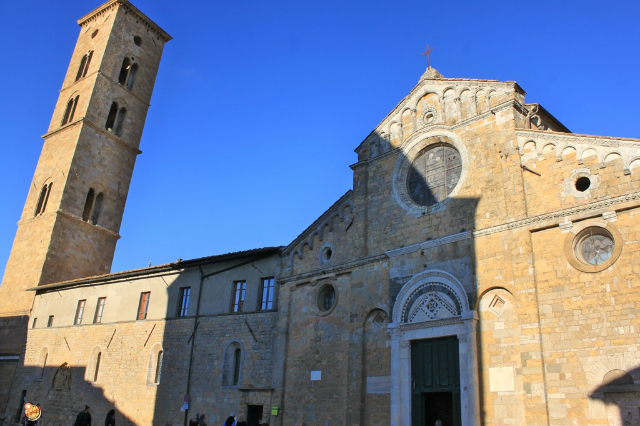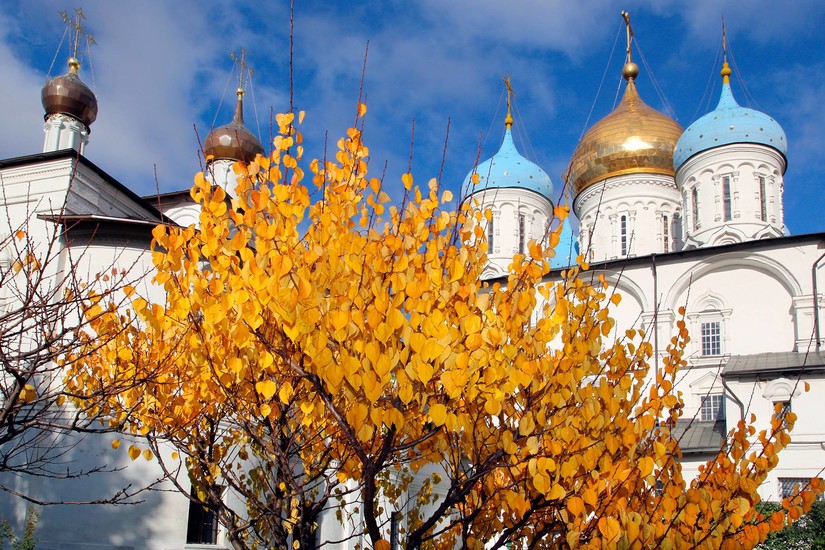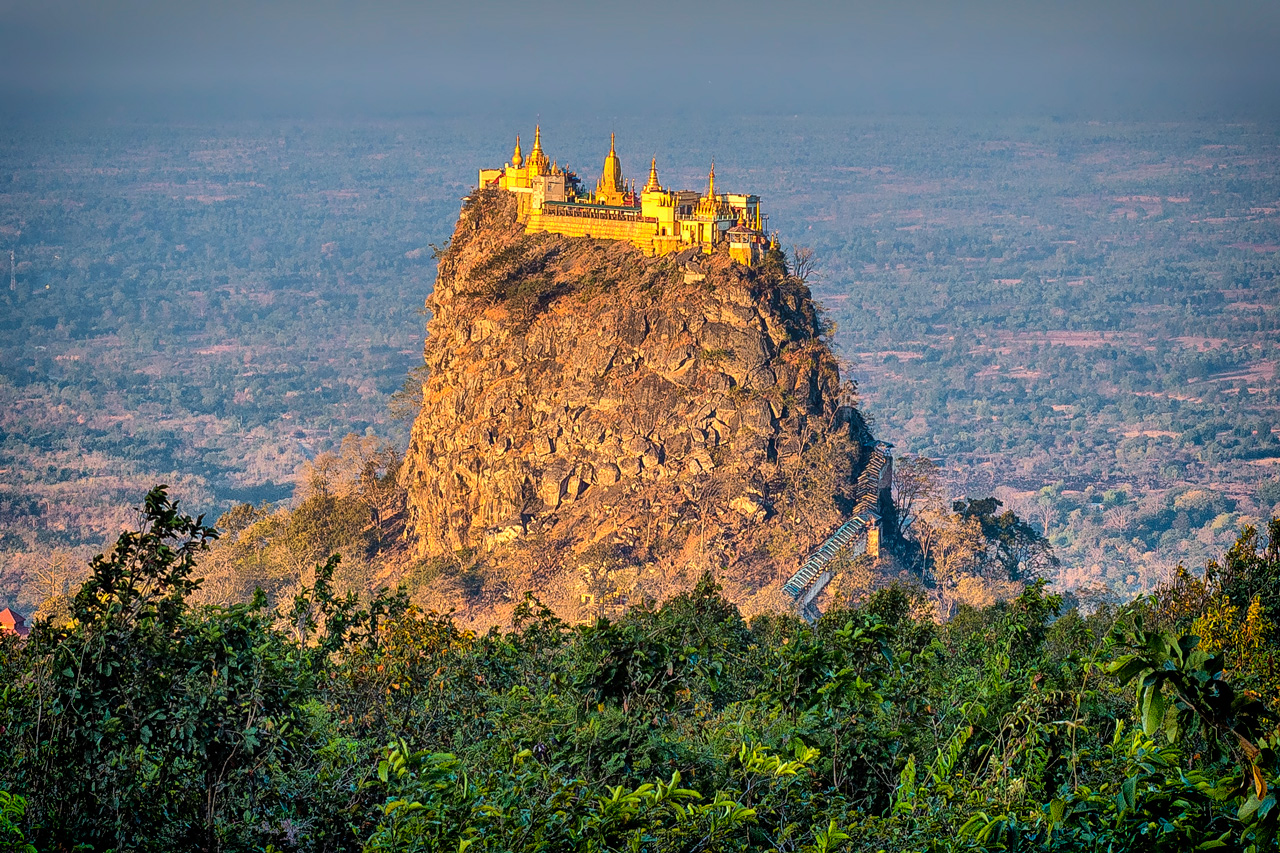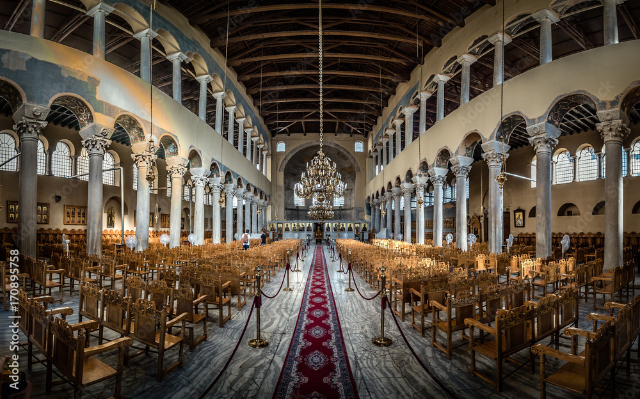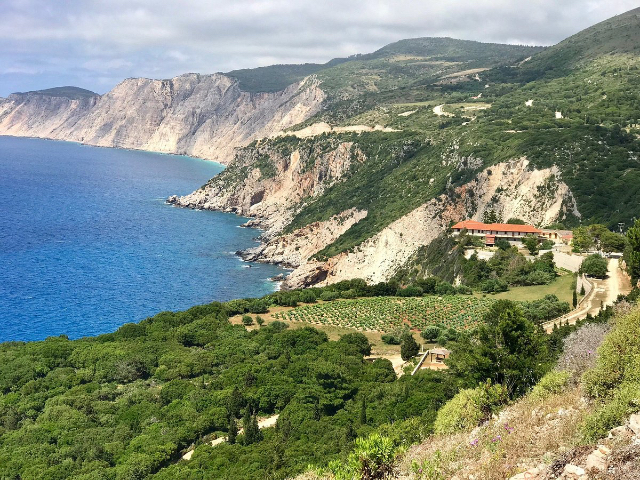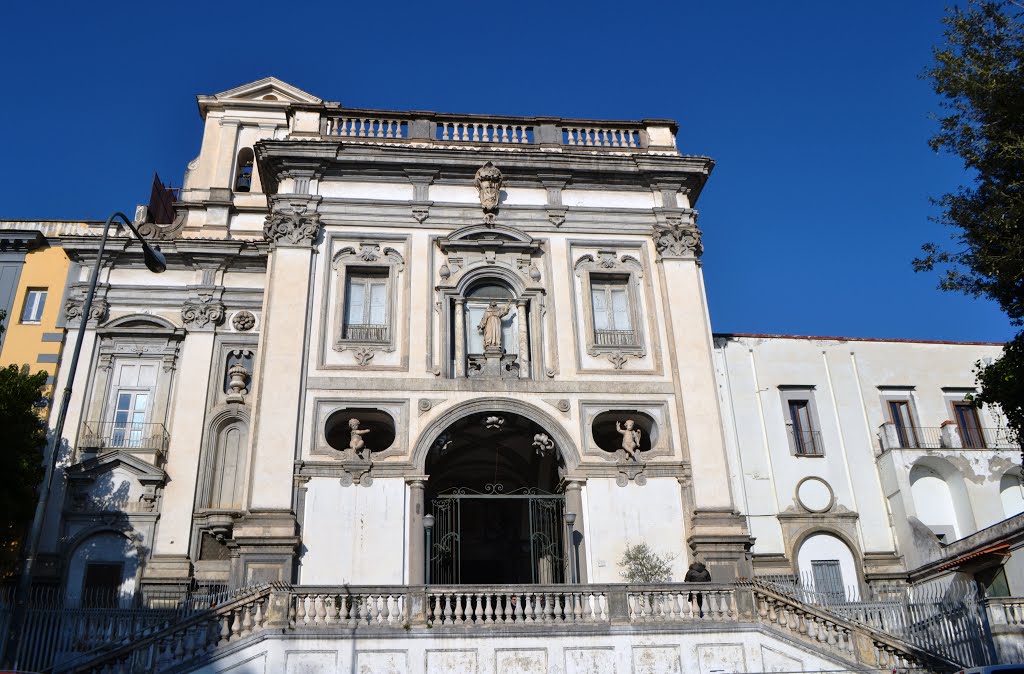Dedicated to the Assumption, the cathedral was rebuilt around 1120 on a pre-existing church dedicated to St. Mary. The salient facade è divided horizontally by a cornice of plaits and flowers while vertically è divided into three compartments by strong quadrangular pilasters of Lombard type. The insertion of the marble portal with its geometrically inlaid lunette, formed of sheet material from the Roman period, è to be traced back to the 13th century when the whole building was enlarged and adorned, according to Vasari, by Nicola Pisano. The interior, while preserving in its structure and layout the Romanesque form of a Latin cross, with three naves, due to the continuous renovations over the centuries, offers, particularly on the line of the naves, a late Renaissance appearance.
the coffered ceiling, pleasing together by crosses, rhombuses, octagons, florals, figures of saints and various colors and gold, designed and put in place by Francesco Capriani, carved by Jacopo Pavolini da Castelfiorentino and put in gold by Fulvo della Tuccia. In the center of the nave è the Holy Spirit (Paradise). Around it are busts of the saints of the Volterra church: St. Hugh and St. Just, St. Linus Pope, St. Clement, SS. Attinia and Greciniana. In the center of the transept è the Virgin Assumed into Heaven with St. Victor and St. Octavian on either side.
